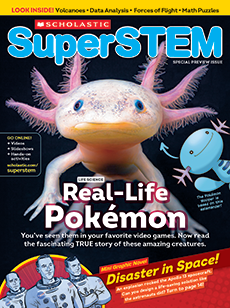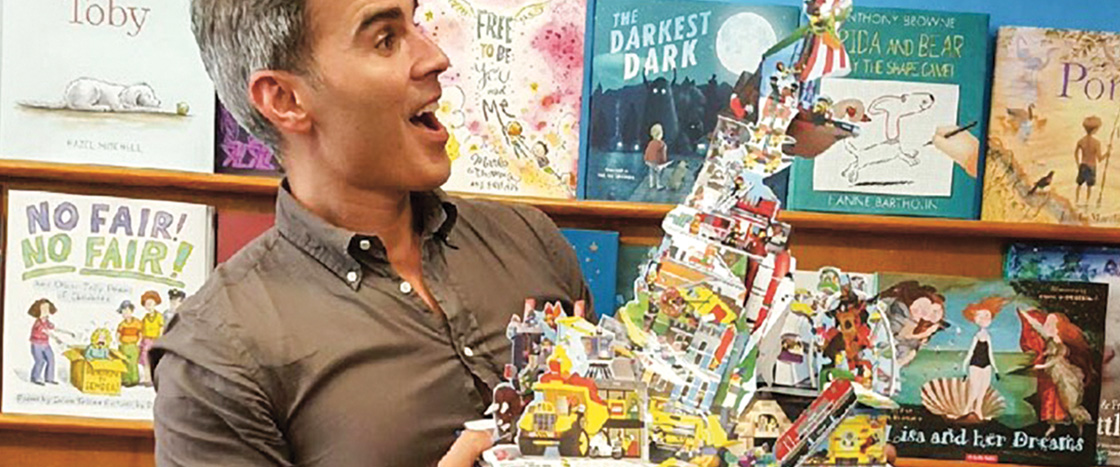Matthew Reinhart works at a table covered with paper scraps in his studio in New York City. He cuts, folds, glues, and tapes pieces together to create a flat shape. Then he pulls a paper tab. Suddenly, the flat shape springs to life. It unfolds into a 3-D sculpture of a monster that waves its claws and gnashes its teeth.
Reinhart designs pop-up books. He helps bring stories to life with dinosaurs that “roar” and fairy-tale princesses that spin. Reinhart combines science, engineering, and art to make his amazing paper creations.
Matthew Reinhart works at a table covered with paper scraps. He has a studio in New York City. He cuts, folds, glues, and tapes paper pieces together. First, the creation is a flat shape. Then Reinhart pulls a paper tab. Suddenly, the flat shape springs to life. It unfolds into a 3-D sculpture of a monster. It waves its claws and gnashes its teeth.
Reinhart designs pop-up books. He helps bring stories to life. He makes dinosaurs that "roar" and fairy-tale princesses that spin. Reinhart combines science, engineering, and art to make his amazing paper creations.

